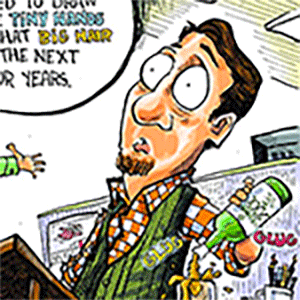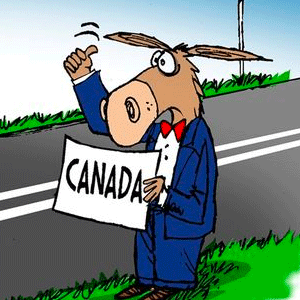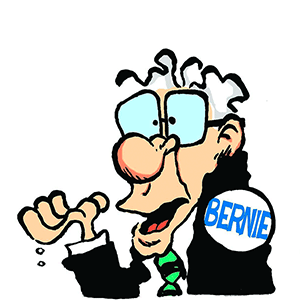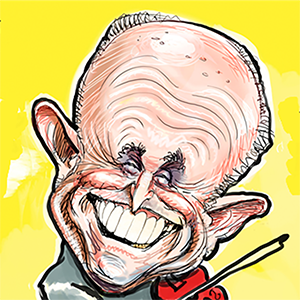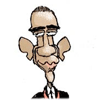From the Left
/Politics
Finding Your People Makes Life Better
When you know where you belong, it's easier to be yourself. As an adult with autism, Sara Lamb's search for belonging has been a long road, which is why I wanted to talk to her. Sara described herself as "quirky" and "shy." When she attended public school as a child, she felt like a "lone wolf." She said, "I just didn't have a lot of lasting ...Read more
Every Passion Flower Starts With Purpose in Southeast Ohio
When Patty Mitchell wanted to design a product around the abilities of special needs workers, the response she got was, "These people will never make anything anybody would want to buy." That shortsighted attitude plays into the social construct that limits people with intellectual or developmental disabilities to employment workshops that pay ...Read more
Holding Space for Hope With the 'Maybe Mindset'
We live in uncertain times. It's a phrase we keep hearing, whether we're talking about climate change or politics. But aren't all times uncertain? We could time-travel to declare uncertainty during the Great Depression, the Civil Rights Movement of the 1960s and the COVID-19 pandemic. Uncertain times are just called life, which is why I wanted ...Read more
Why Your Truth Matters in the Age of Hate
April 18 is National Columnists Day. Because of this, I want to hold space for the writer in all of us. Don't believe we are all writers? Just look at social media.
Gone are the days when opinions were sequestered to dinner tables or written in letters to the editor. Public opinions are no longer reserved for professional newspaper columnists ...Read more
Civil Rights Leader Mattie Jones: 'You Have To Set Yourself Free'
Mattie Jones turned 92 at the end of March. Friends, family, state senators and our U.S. congressman filled the First Congregational Methodist Church to celebrate her. I first met Mattie Jones a year ago when she spoke to a racial justice class designed for white allies. Jones is a civil rights icon in Louisville, Kentucky.
At the end of her ...Read more
Tending to Our Homes and Our Hearts With TikTok Star Mercury Stardust
Mercury Stardust visited my local library last weekend to talk about her New York Times No. 1 bestselling book "Safe and Sound: A Renter-Friendly Guide to Home Repair." The TikTok star and "Trans Handy Ma'am" is a transgender woman and home repair expert who serves her video tutorials with a side of social justice and humor. I'm glad I got to ...Read more
Medicaid Helps Your Children in School Too. You Just Don't Realize It
In the search for waste, fraud and abuse, President Donald Trump and Elon Musk's Department of Government Efficiency have set their sights on Medicaid and the Department of Education. On paper, these potential cuts don't affect local curriculum, or educational services for special needs families, because laws are in place to protect them. But ...Read more
Celebrate the Resilience of Immigrant Mothers During Women's History Month
My mother-in-law was born on a small ranch in San Luis Potosi, Mexico, in 1951. After her mother died from illness, my mother-in-law crossed into Brownsville, Texas, during the Charro Days Fiesta.
She was 13, undocumented and alone.
I've written about my mother-in-law's journey before. However, in light of Donald Trump's immigration policies ...Read more
Lighting the Torches of Others for Women's History Month
Just in time for Women's History Month, there's an essay collection called "Fast Famous Women" releasing March 4. I'm honored to have contributed a chapter about iconic humor columnist Erma Bombeck. However, what's perhaps even more special about this collection is its editor. Gina Barreca, who holds a doctorate in English literature, is at ...Read more
Are You Ready To Believe In What's Possible? There's a Podcast for That
Shortly after the election, I decided to refocus my column. Instead of contributing to the vitriol found in much of the public discourse, I want to carve out space dedicated to shining a light on the people doing good work to help make this world a better place. I'm holding space for good. It's what I'm calling my column going forward.
This ...Read more
How a Hate Crime Spurred This Mom To Double Down on Kindness
Every interaction you have creates a ripple, whether you intend it to or not. The kind of ripple you create is up to you. Mindy Corporon wants it to be one of kindness. How she came to this resolve after a white supremacist opened fire and killed her son and her father in the parking lot of the Kansas Jewish Community Center in April 2014 is why...Read more
This Tennis Club Shows Why DEI Is Here To Stay
While President Donald Trump signed executive orders to strip diversity, equity, inclusion and accessibility programs from the federal government, Aretha Fuqua traveled to Atlanta to accept the Diversity, Equity and Inclusion Champion award on behalf of the West Louisville Tennis Club at the United States Tennis Association Southern Division ...Read more

















